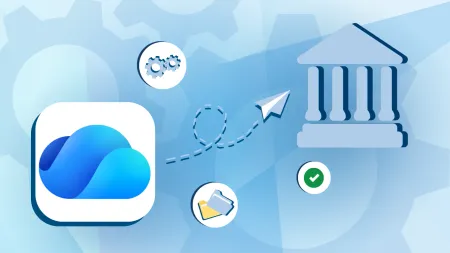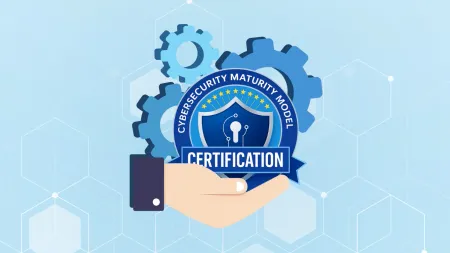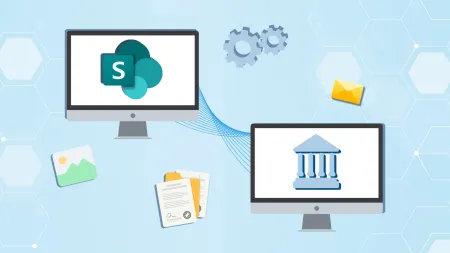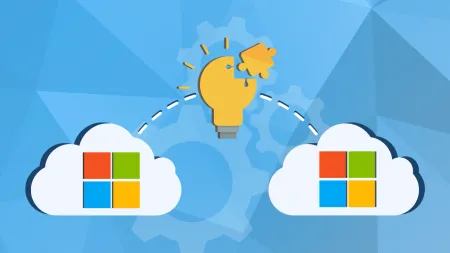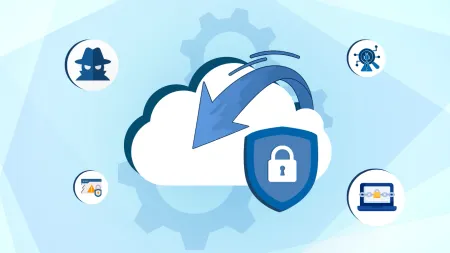Key Microsoft 365 (Office 365) Security Best Practices to Prevent Data Breaches
Discover essential Microsoft 365 security tips to prevent breaches, including strong passwords, multi-factor authentication, data loss prevention, and more

Lock down your Microsoft 365 with these top security best practices. Learn how to protect your data, prevent breaches, and reduce human-caused security risks.
Introduction
Microsoft 365 provides a powerful suite of productivity tools designed to enhance business collaboration, communication, and workflow optimization. However, with great power comes great responsibility, particularly in the context of cybersecurity. The cost of a data breach can be catastrophic for any organization. Malicious actors constantly refine their tactics for a chance at your valuable data. So Implementing Microsoft 365 security best practices ensures your defenses stay ahead of the curve, keeping your company data secure.
Identity and Access Management
The cornerstone of any good security strategy lies in tightly controlling user identities and access. Microsoft 365 offers a comprehensive set of tools so you can control who has access to your data and what they can do with it.
Create a Strong Password Policy
Employees might find it annoying to deal with a robust password policy, but it’s the first wall of defense against brute-force attacks. User credentials give direct access to your organization’s resources. A strong password policy ensures employees’ passwords are nearly impossible to guess or crack. Here are some key recommendations to consider:
- Require a 12-character minimum
- Ban common and vulnerable passwords
- Mandate a two-step verification
Here are some traditional password complexity requirements you might want to avoid:
- Using a combination of upper, lower, digits, and non-alphanumeric characters as it shows infectivity contrary to common belief.
- Mandating frequent password changes as it’s been proven by America’s Federal Trade Commission (FTC) that this practice does more harm than good
Mandate Multi-Factor Authentication (MFA)
Using a strong password is great, but it doesn’t matter without MFA as Alex Weinert, the Directory of Identity Security at Microsoft said.
Microsoft 365 gives you the option to require users to sign in with a verification code from their phone via multiple methods, such as SMS or push notifications. This way, even if a determined cyber crook finds a way to obtain an employee’s password, they should be unable to provide additional proof to get in.
Don’t Forget Conditional Access Policies
Conditional access is an essential security element of the Zero Trust model (never trust, always verify). It goes beyond traditional perimeter-based security by continuously validating users’ access attempts in your organization. Such an approach reduces the possibility of hackers accessing your organization’s sensitive data if they ever pass the first-factor authentication.
Microsoft 365 lets you define granular access controls based on user group, device type, location, or application. You can even add conditions to require MFA.
Protecting Data and Information
A secure foundation of identity and access management is just the first step. The real focus is always safeguarding your valuable data and information.
Stop Exposure With Data Loss Prevention (DLP)
Organizations handling sensitive data, such as financial records or health information, understand the critical repercussions of accidental data leaks. According to a study by IBM, human error caused 95% of cybersecurity breaches.
Microsoft 365 DLP is about identifying and preventing sensitive items from being accidentally or maliciously leaked. It classifies such data using deep content analysis with the help of AI and machine learning. You can configure custom DLP policies to detect and block the unauthorized transmission of sensitive data across all Microsoft 365 apps, including Copilot, Teams, and SharePoint.
Protect everything at Rest
Of course, Microsoft 365 encrypts your data both at rest (when stored on Microsoft servers) and in transit (when being transferred between clients and servers), but how about emails?
Emails are sent using TLS, which means they’re encrypted while in transit to block cyber snoops. However, when they sit in your recipient’s inbox (at rest), they stay unencrypted. So, If a bad actor ever gained access to that email, confidential messages would be visible in plain text.
You can encrypt the content of an email with Microsoft 365. This renders your private messages unreadable while at rest, in your recipient inbox. Only the intended recipient can decipher and read them using the matching key.
But it’s not just emails. It is all your data!
Content in Teams and SharePoint are catching up if not already on par with email. Putting compliance policies in place to protecting it is huge in this current landscape.
In today’s digital workplace, platforms like SharePoint and Microsoft Teams have become integral to business operations, facilitating collaboration, document sharing, and communication. However, with the increasing reliance on these platforms, ensuring data protection has never been more critical. SharePoint and Teams often store sensitive information, including financial records, personal data, and intellectual property, making them prime targets for cyber threats. Protecting data on these platforms involves implementing robust security measures such as encryption, access controls, and regular audits. By safeguarding this information, businesses can prevent data breaches, maintain regulatory compliance, and protect their reputations. Moreover, a secure environment fosters trust among employees and clients, enabling seamless and worry-free collaboration. Investing in data protection for SharePoint and Teams is not just about preventing losses but also about empowering your organization to thrive in a secure and efficient digital ecosystem.
Actively Backup Your Data
Microsoft 365 provides a secure infrastructure to process and store your data. However, you as a client, are responsible for keeping your data secure. You should be able to counter accidental data loss (file deletion and data corruption) and destruction attacks (ransomware and viruses). That’s why, it’s wise to invest in a solution that automatically backups data on your Microsoft 365 apps.
Microsoft didn’t offer a native backup solution before, but now it does. Microsoft 365 Backup is available with pay-as-you-go billing. You can set up policies for OneDrive, SharePoint, and Exchange, with Teams expected to be included in mid-2024.
Continuous Monitoring and Threat Detection
Even with robust security measures in place, vigilance remains paramount. Proactive monitoring and threat detection are crucial for identifying and mitigating potential security risks
Monitor the Activity of Third-Party Users
Privileged users require special attention. A study by the Ponemon Institute in 2022, reported that 50% of organizations do not monitor third-party users, and more than 70% experienced cyberattacks resulting from giving too much access to third parties.
Third-party users may have direct access to sensitive assets that malicious actors look to compromise. Besides setting the proper permissions, you can significantly minimize the risk by monitoring and detecting unusual behavior of third-party activity. Microsoft 365 offers comprehensive activity monitoring capabilities so you can keep track of who does what in your system.
Use Microsoft Defender for Cloud Apps
Defender for Cloud Apps is a modern Cloud Access Security Broker (CASB) for protecting data and cloud apps within the Microsoft environment. This cloud-based security solution can continuously monitor the Microsoft 365 ecosystem for suspicious activity and identify potential threats. Connecting Defender for Cloud Apps to Microsoft 365 can help you discover and control shadow IT, malicious apps used by employees, potential ransomware activity, and more.
Defender for Cloud Apps uses machine learning for its automated investigation and remediation abilities. This gives you improved visibility and control over sensitive data and users’ activities.
Microsoft Secure Score
The cybersecurity landscape is constantly shifting, with new and sophisticated threats emerging all the time. This can make it challenging for organizations to maintain an optimal security posture. Microsoft Secure Score is a security analytics dashboard for your Microsoft 365 setup. It assesses your security configuration, assigns a score, and provides practical recommendations based on your implementation of best practices.
This feature will encourage you to constantly improve protection and align your organization with Microsoft’s industry-leading security practices.
Raise Security Awareness With Simulation Attacks
Even the most fortified organization can be breached if its employees are unaware of potential threats. According to Verizon’s Data Breach Investigations Report, 74% of breaches involved the “human element”. Unaware employees are usually behind such threats, so boosting their security awareness is a must.
The Microsoft 365 Attack Simulator can help. It can detect potential human-caused weaknesses while training your employees to recognize and avoid real-world threats. This training allows you to simulate real-world types of attacks like phishing and brute-force password attacks. You can launch a wide range of social engineering techniques too.
Get Help Implementing Microsoft 365 Security Best Practices
Microsoft 365 offers a powerful security toolkit, but applying its best security practices in this ever-evolving threat landscape might be tricky. As a Microsoft Gold Partner, Agile IT can help you implement these best practices to fit your organization’s needs. Talk to us today and see how you can improve your Microsoft 365 security posture.
